How I added a Solar Powered Fridge to my Car
May 9, 2020I have at various points over the past few years had van envy. That is to say jealousy of people with tricked out sprinter vans with fridges, full beds & kitchens. Having been on my fair share of month-plus long road trips the appeal and utility was not lost on me. That said I was never ready to shell out $40k for one of my own, nor was I interested in becoming a master carpenter and building out my own shell (perhaps someday). Not to mention the fact that I just paid off the loan on my trusty Subaru Forester so it seemed foolish to commit myself financially to another vehicle when the one I had worked so...alright.
One of the items I was most jealous of in tricked out Sprinters was the fridges! Being able to live off the grid with cold beer and bacon seemed too good to pass up. So I didn't. I ended up tricking out my Subaru (or shall we call it a Camparu?) with a solar panel, aux battery & a fridge.
This post is a work in progress. If you have any questions about what I did feel free to reach out through email or twitter
V0 - Portable fridge
Components
- Alpicool C15 Portable Refrigerator - $179.00 - This is the cheapest and smallest refrigerator with a compressor I could find. A friend bought one and used it in his car before me so I had reason to believe it would work decently well. At a price of $200 (give or take) what's there to lose?
- 35 AH Deep Cycle Golf Cart battery - $63.99 - I didn't want to start with a full car battery in my car so this is what I picked. It's worked quite well although it probably is the weakest link in my system. Upgrading to a 50-100 AH battery would provide more peace of mind when leaving raw meat in the fridge for a day or two while out hiking. After all, who doesn't want a burger at the trailhead after a long hike?
- 12v Battery Tender (charger) - $24.98 - Before getting too crazy I wanted to make sure the initial components worked well together, so I bought this charger so I could charge up my battery at home and test out my fridge with it.
- Battery terminal to plug adapter - $6.95 - The fridge comes with a 12v plug (that fits in the sockets you usually find in a car). In order to attach the fridge to my battery I'd need one of these.
- A couple of nuts, washer & bolts to attach the adapter to the battery
With all of these components I had a fridge that I could take on the road with me and run it overnight. You can even leave the fridge plugged in to the car while you drive and move it over to the battery once you park for the evening. After a trip or two with this setup, it was clear the battery & fridge worked well together so it was time to kick things up a notch. Who wants to remember to unplug the fridge every time you turn the car off anyway!?
V1 - Hook your battery up to the alternator
Components
- Continuous Duty Solenoid - $36.20 - The most important item of this step. It's basically an electric switch that turns on & off based on an input voltage.
- 4 Gauge Battery Cables - $28+ - These need to be pretty beefy to ensure they can carry all of the power from your alternator. The thinner the cable the more energy loss on the way to your aux battery. If they're TOO small they can catch fire...don't skimp here, go with 4 AWG to be safe. These ones come with terminals already attached but you can also buy in bulk and attach the terminals yourself. The only thing is you'll need a REALLY big crimp to do this. I ended up going to a marine supply shop here in Seattle and using a crimp to do it myself.
- Inline circuit fuse/switches - $18.99 - Remember how I said these cables are carrying a lot of power? That means bad stuff can happen if you don't ensure you have a fuse in the system in case there is a short circuit.
- Multimeter - $11.99 - This enables you to find a spare fuse socket to hook up to the solenoid. It needs to have power when the ignition is in the on position & none when you turn the car off.
- 12 Gauge wire - $20.95 - You'll need some wire to carry the voltage from the fuse box to the solenoid. 100ft is overkill and I didn't love this wire because it was super stiff but it ended up working well enough.
- Wire stripper - $11.98 - You'll need some way of cutting, stripping, and crimping your wire in order to rig this whole thing up.
- Terminal Crimps - $6.29 - You could just shove a wire into the socket but this is a little bit more...refined way of doing it.
- Fuses - $10.99 - These are good to have so you don't end up blowing a circuit in your car if you mess something up or if the cable insulation wears out.
- Electrical Tape - $9.98 - It's good to wrap all open wire connections so they are insulated.
Got all that!? Phew, that's a lot of little things. Don't worry this next part isn't too complicated. The next step is figuring out where these things are going to go in your car/engine compartment.
Here are the important things you need to find:
- Spare fuse socket that provides power when the ignition is on. I was hoping to find one that only lit up when the engine was on but all I could find was ones that lit up when the key was turned to the on position (even if the engine was off). This means your aux battery will be pulling power from your main battery whenever you leave your ignition on (even with the engine off). Remember this and don't drain your battery.
- A place to mount the solenoid, ideally in the engine compartment
- A way to get power through your firewall (what separates the engine from the inside of the car)
Below you'll see the fuse box circled in red and a rubber plug in the firewall circled in blue.
Please excuse the thick layer of sludge coating everything inside my engine compartment
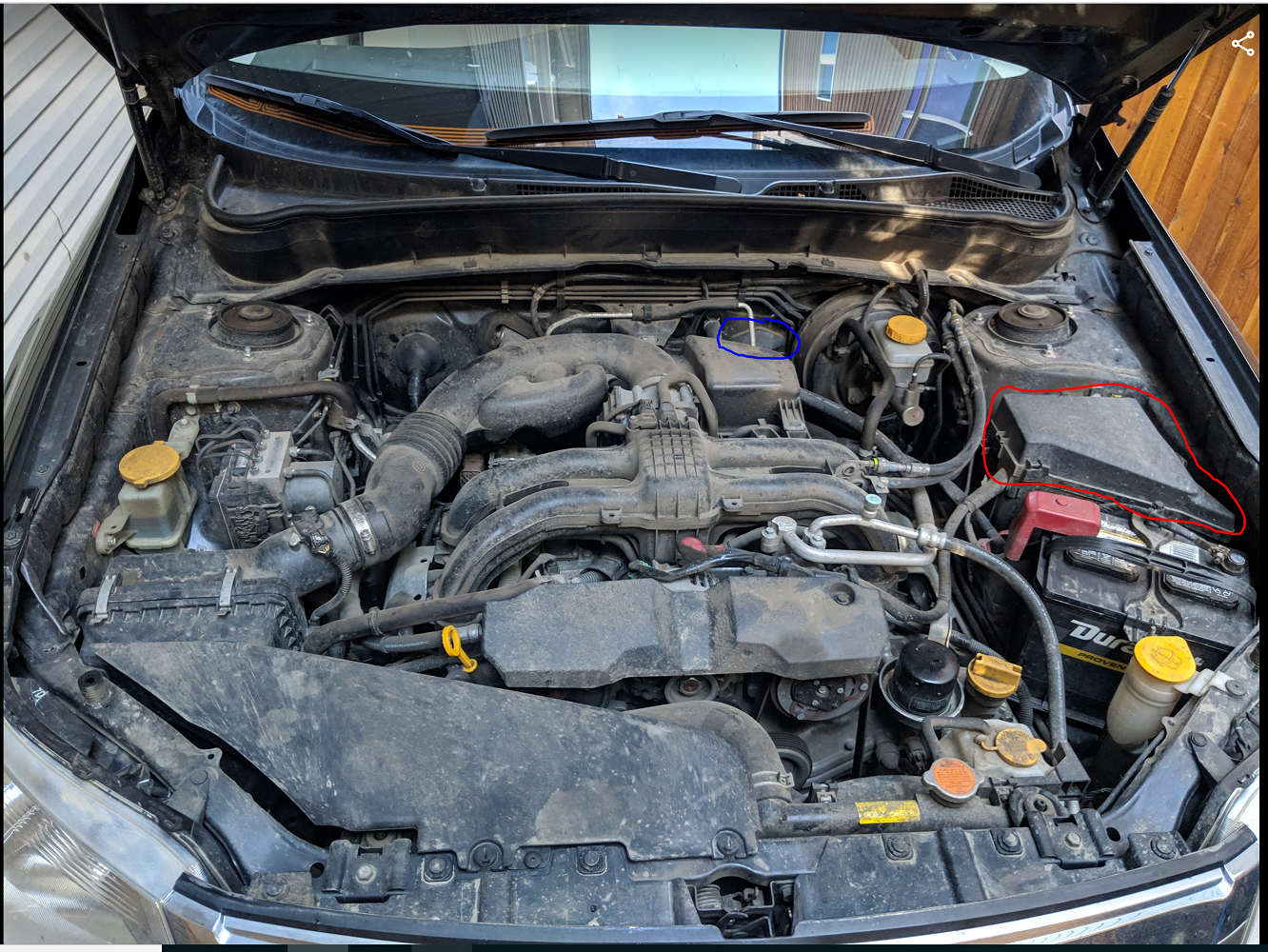
Mounting the solenoid
This might be one of the more difficult parts of the build. I found this hollow sheet metal tube running along the side of my engine compartment and figured why not drill some holes in it!? Once I'd drilled the holes I had to take out a bunch of bolts that helped attach the front side panel of my car to the sheet metal so I could fit my arm down there and hold the other side of the bolts/nuts to tighten the solenoid in place. I also covered everything in some black duct tape to make it look better.
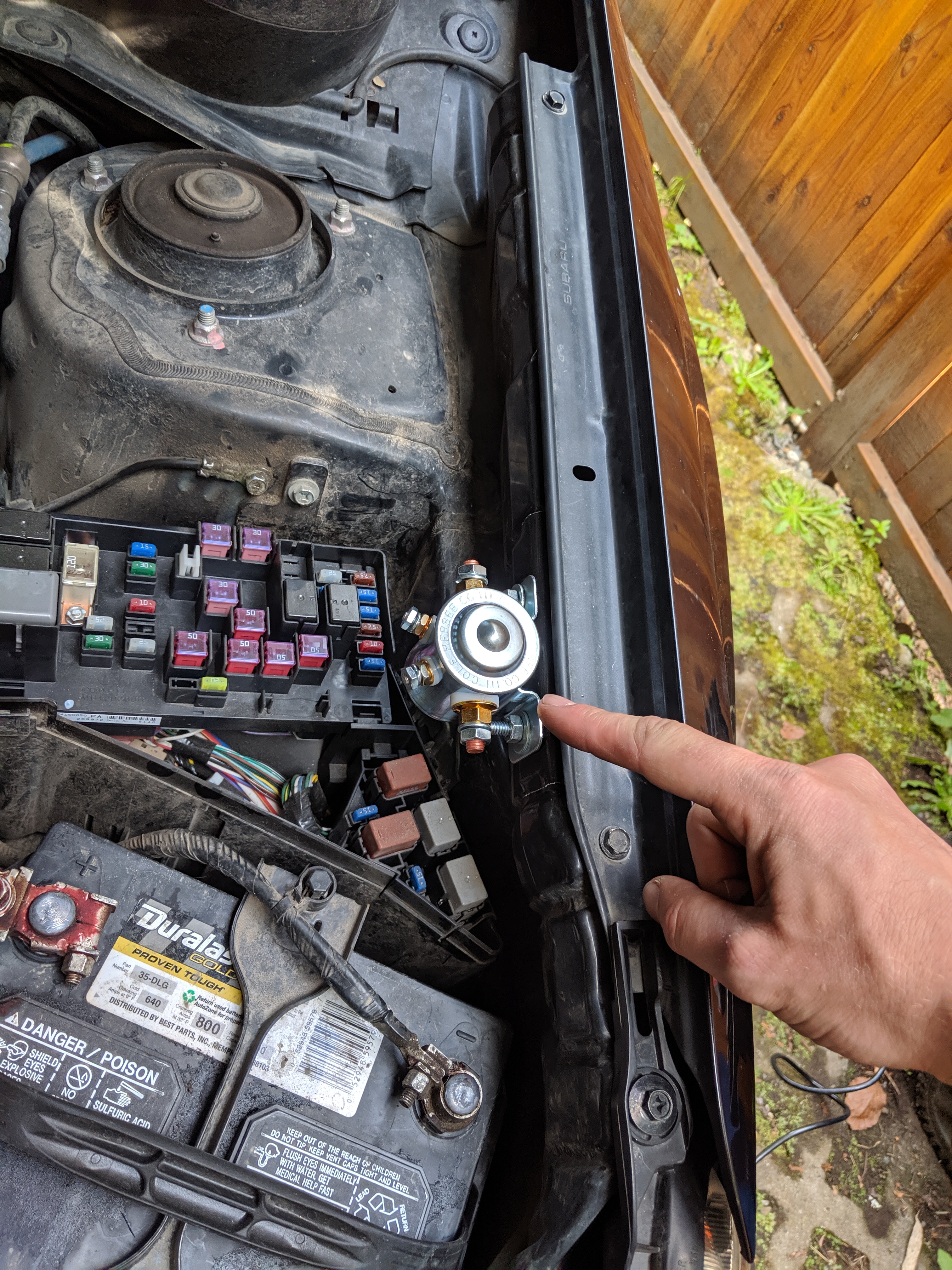
The lid to the fuse box can easily be removed if you undo the clips on the sides. Inside hopefully you'll find an empty socket. The one I use had 4 holes (you can see it below). Use the multimeter to measure the voltage across two of the terminals until you find one that has no power when the car is off and ~12+ volts when the car is on. Once you've found that you've got your trigger for the solenoid.
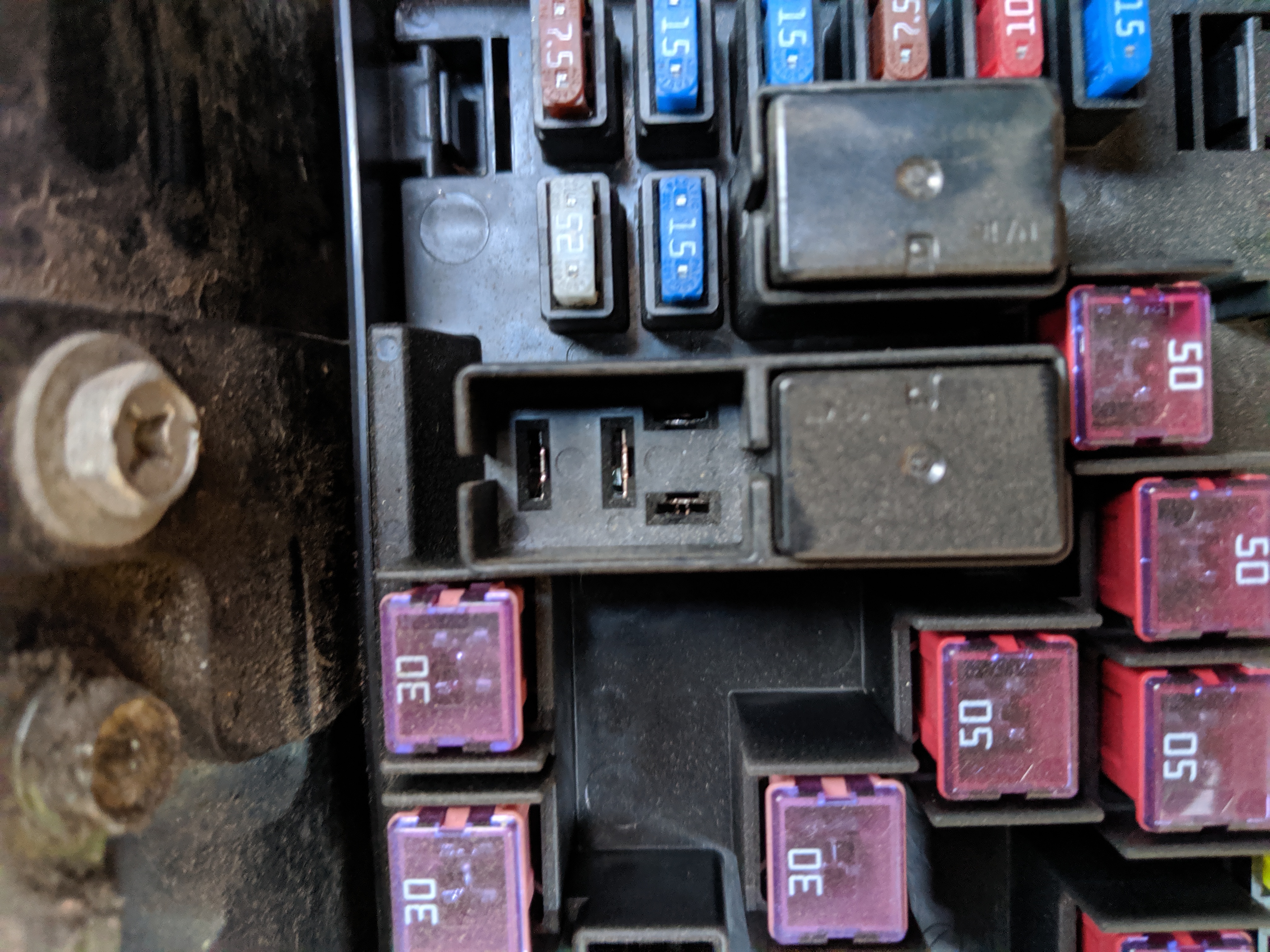
I then hooked the solenoid up to the fuse box using the 12 gauge wire + terminal crimps so I could plug it into the fuse socket. On my solenoid the input terminals (the ones that activate the switch i.e. the ones we want to hook up to the fuse box) are smaller. It doesn't matter which terminal you rig the fuse socket to, either direction you run current through the solenoid it should function. The other small terminal you will want to ground to the car body (I ran a 12awg wire from it to a bolt on the body).
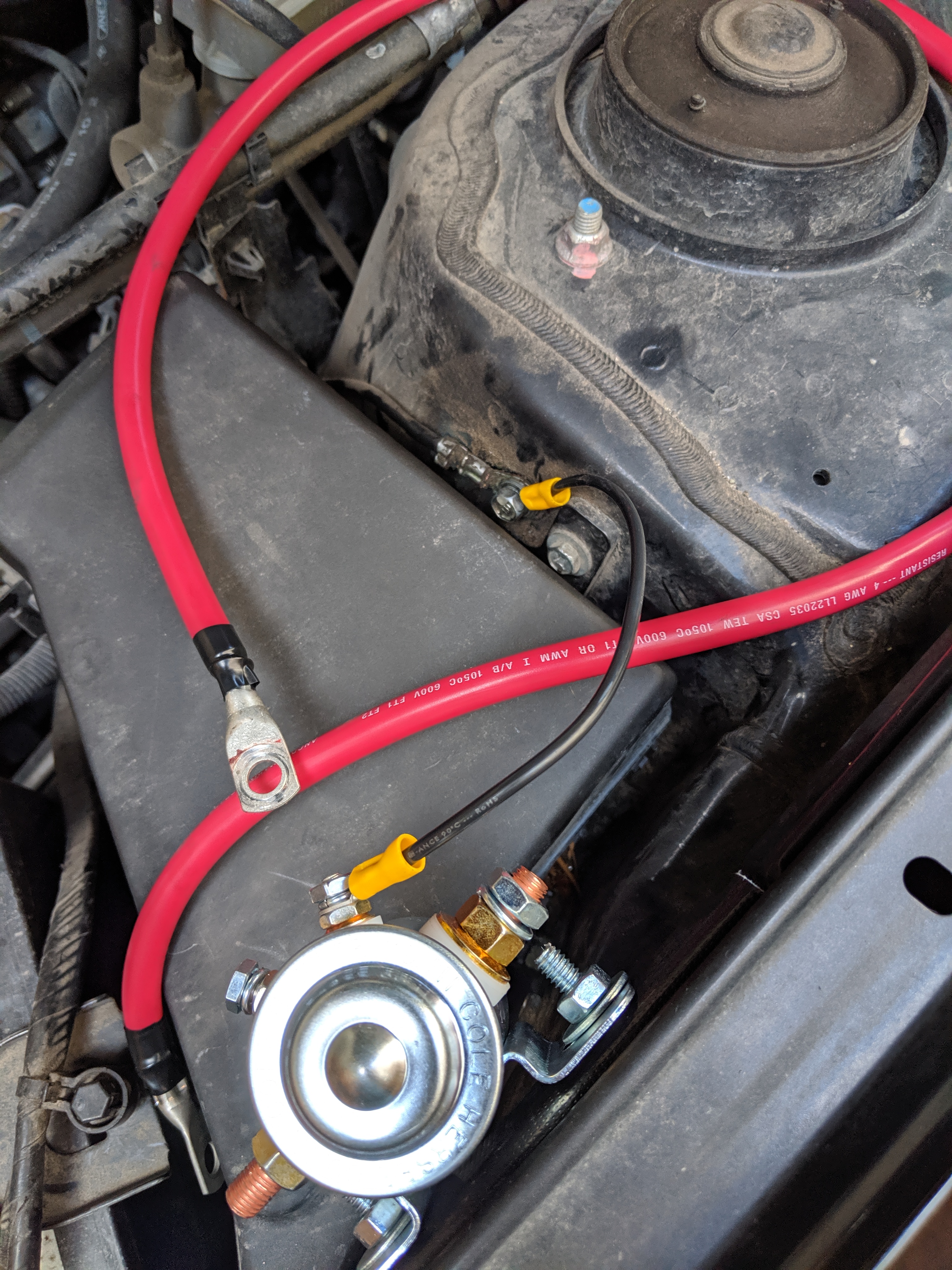
Once you've got this all set up it's time to run the 4 gauge cable from the battery (effectively the alternator), through the solenoid and to your AUX battery. I used inline circuit breakers on both ends (close to each battery) so that if any of my connections wear through & current starts running freely through the car the system will blow and not wear out my battery or catch anything on fire. The circuit breaker are nice because I can also use them as a switch and disconnect the system without having to remove any of the terminal connections.
In addition to hooking up the cable, you'll also need to figure out a way to get it from your engine compartment to your AUX battery. I keep my AUX battery in the trunk so I needed to run it all the way through my car. I ended up finding a rubber plug in the firewall of the engine that I was able to run the cable through. You only need a single cable because you can ground your AUX battery to the car body through a bolt in the back of the car.
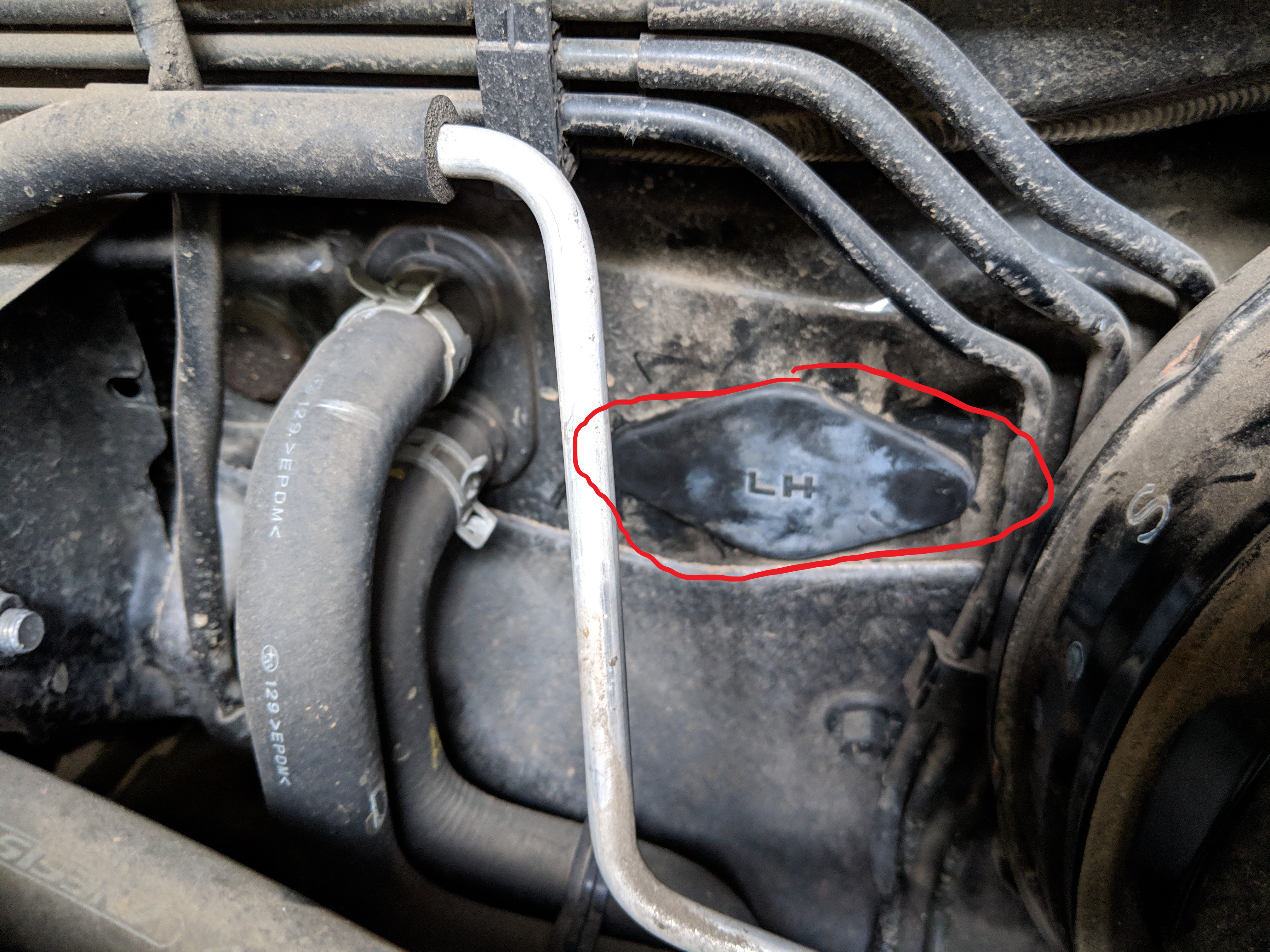
V2 - Hook the AUX battery up to solar
Having a fridge that you can use on the road is great and all, but what if you want to park your car for a few days and won't have the engine running to charge up the AUX battery? This is where solar comes in. My friend Tyler had recently installed a solar panel on the roof of his Outback and inspired me. My problem was realestate on my car for the panel. I have a roofbox, bike rack & an awning on my car's roof so there wasn't any room up there for the panel. Thaat left the hood of my car. I'd never seen anyone mount a solar panel on their car before but after a bit of google sleuthing I came across a thread of someone mounting a flexible panel to their Jeep hood...this was good enough for me to give it a shot!
Parts
- Flexible solar panel - $109.98 - I picked the largest flexible solar panel that would fit on the "flat" section of my hood. Despite being flexible, it's only mildy so. You don't want it to go over an creases on your rooft or you won't be able to get it to sit flush.
- MPPT Solar Controller - $59.90 - I sprung for a MPPT controller which are more expensive, but they eek more power out of the panel which is useful if you can't control how much sun you're getting.
- 15ft 3M Double sided tape - $16.90 - this stuff is SUPER strong
- 13ft Door Edge Guard - $10.99 - used this to wrap the edge of the panel so it would hold together, I've heard of them starting to delaminate at the edge so this was a protective measure.
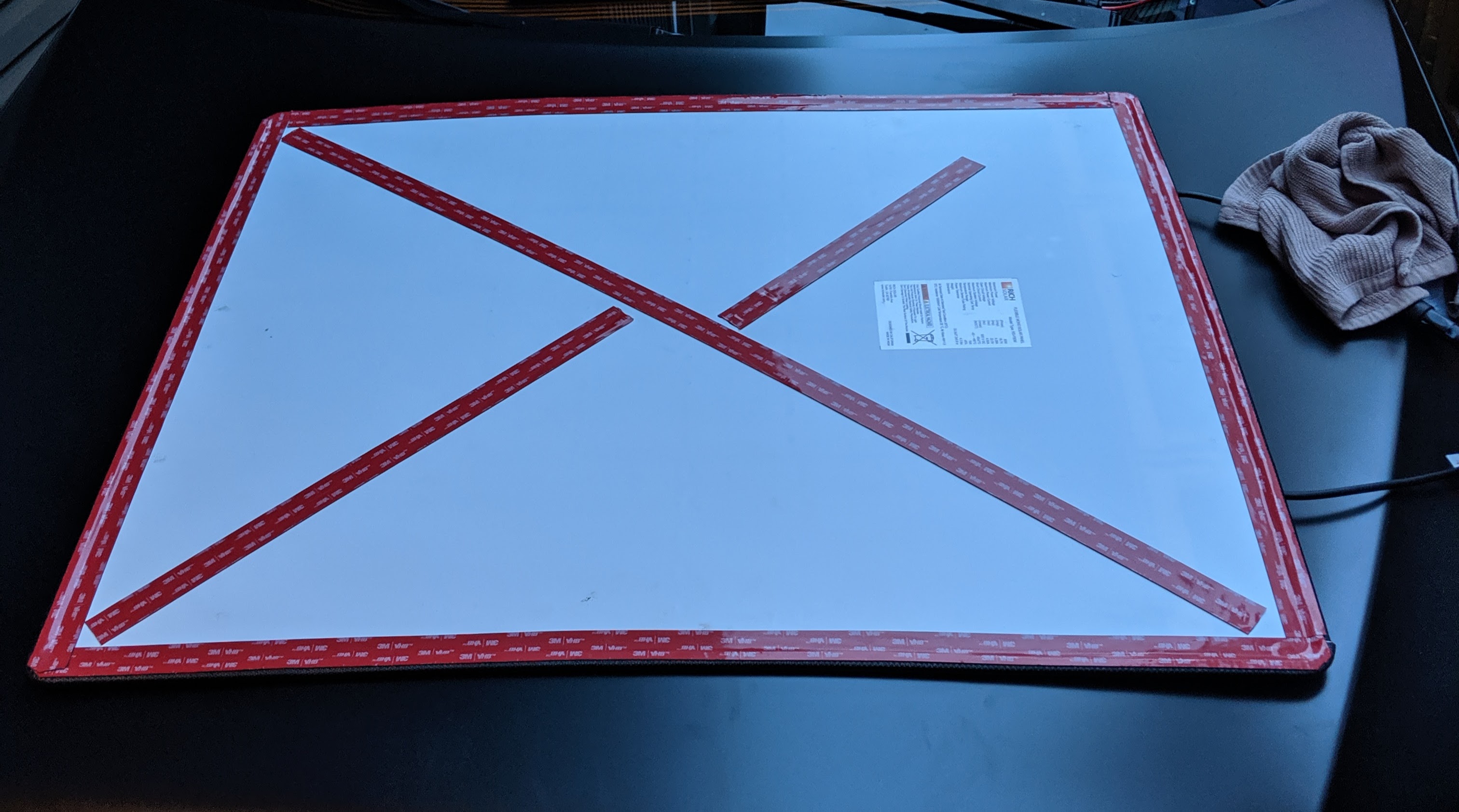
This might sound a little janky, but after a year and half with this on my hood through 2 summers, 1 winter, pleny of rain & snow and driving up to 80 miles per hour I've seen 0 indication that the tape is failing. It's holding up great!
I could've bought a black on black solar panel which probably would've looked a bit more descreet, but I was cheap and wanted to save $20. That and the obvious solar panel on my hood makes a great conversation piece...I have people ask me about it all the time.
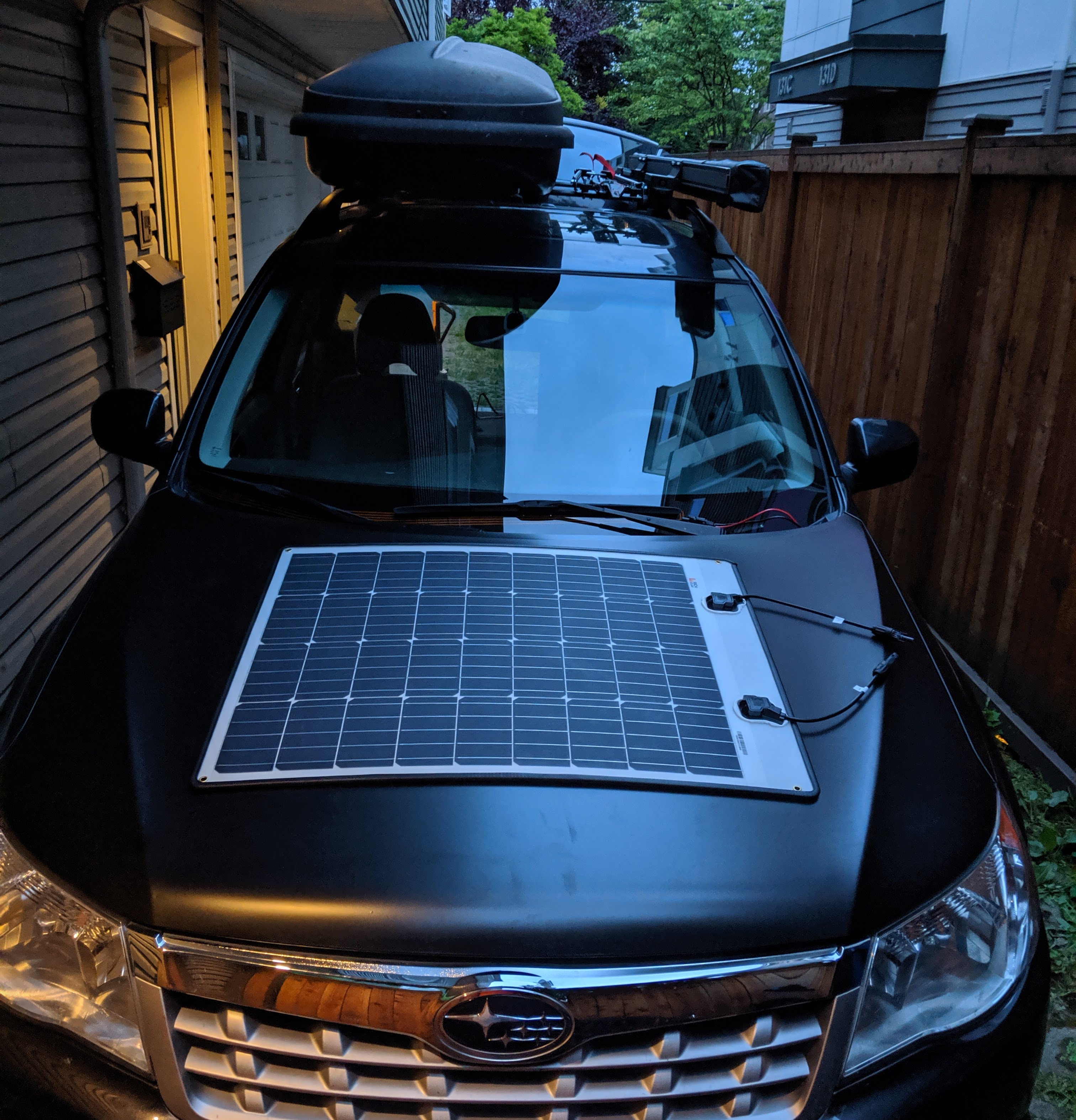
After getting the panel installed, I ran a flexible 10AWG cable from the panel, under my hood & then along side the 4AWG cable from my car battery all the way to the back of the car. For this one you'll need to run a connection from both connectors of the solar panel, you can't just ground it to the car (as far as I know).
I installed the solar controller in my trunk right next to my battery.
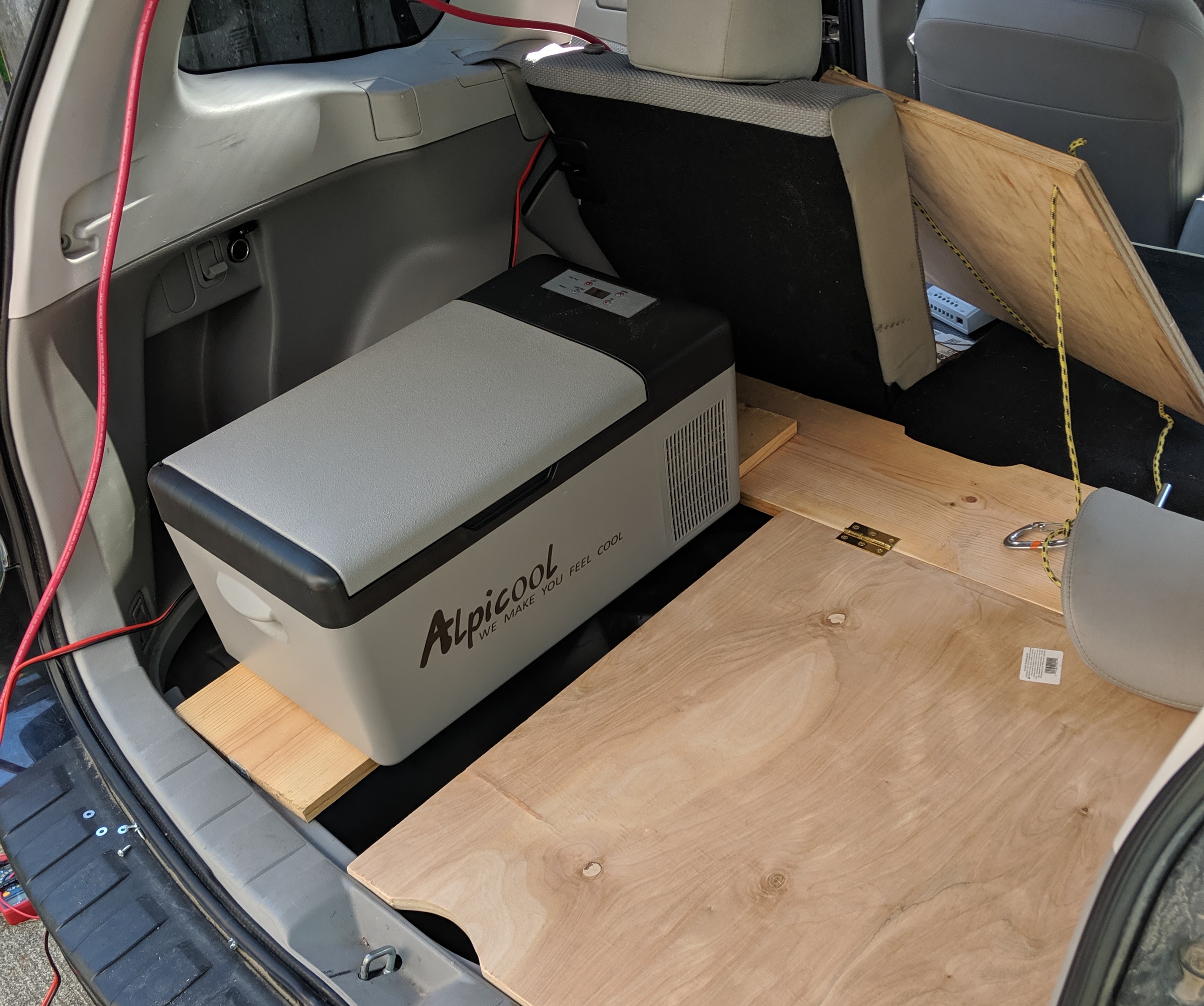
Voila, the AUX battery charges off my alternator while I'm driving and once I park it charges off of solar!
Final Thoughts
- If I were going to upgrade one thing from the whole project it would be the battery. I think my car + solar combination has the potential to keep a larger battery topped up and if it's really hot out I'm sometimes concerned about whether my battery will die overnight while keeping the fridge running.
- I may move the battery + solar controller out of the trunk. It was fine for my solo road trips because I used a 25" wide mattress that would fit in my car along side the fridge, but when I car camp with my GF we definitely can't sleep in the car. I'd like to see if I can fit the battery + controller under one of the front seats in my car to free up trunk space.
- Sometimes if I park my car in the hot sun with the windows up the fridge will struggle to keep cool and will end up running continuously. To combat this I crack my windows and cover the fridge with a foam mattress so it's not in the sun. I may build a ventilated box for the fridge and some point and add a bit of insulation so it doesn't sit in the hot sun.